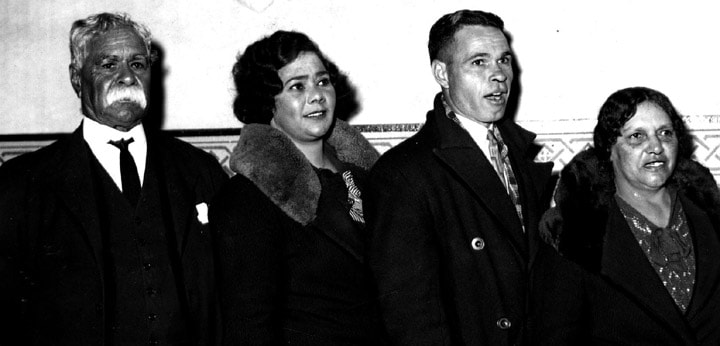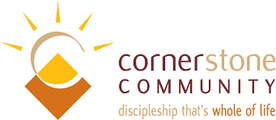|
‘For Our Elders’ is the catch cry of NAIDOC WEEK 2023. This story is told to honour brave and compassionate men and women who pioneered the cause of Aboriginal civil rights in Australia. In May 1937, a remarkable event took place in Melbourne. The grand finale of the concert marking the city’s foundation was an aboriginal choir singing ‘Burra Phara’, an African- American spiritual translated into the Yorta Yorta language. The Cummerugunga choir had learned it from black American students from Fiske University in Tennessee, who visited their Maloga mission near Echuca in 1886. The passionate music, expressing the yearning of the oppressed Hebrew people for freedom from Egyptian slavery, reached across 3000 years to touch the hearts of Australian aboriginals. Almost certainly in the audience was a young William Cooper, the man destined to become one of the great Aboriginal elders who, like Moses, led his people on the long road to freedom. Wherever he went rousing support for his people’s civil rights, he was accompanied by a quartet who sang biblical songs like this. William Cooper, with his distinctive moustache, is pictured here with family members who supported him. No doubt it also moved Daniel and Janet Matthews who had single-handedly created the sanctuary for the harassed Yorta Yorta people. Daniel was the son of John Matthews, one of the tough breed of English ship captains who carried black Africans to the Caribbean to be sold as slaves. In mid-Atlantic, a vision turned his life upside down and he returned to his native Cornwall to become a dedicated Wesleyan Methodist. The message of Jesus turned him from exploiting his fellow men, to serving them. The conversion of the slave-ship captain had a profound effect on his sons Matthew and Daniel, because when they arrived in Ballarat in the 1850’s they immediately expressed compassion for the oppressed Aboriginal people. Historian John Harris takes up the story. “When Daniel Matthews first encountered the dispossessed and cruelly exploited Aboriginal people of the Murray River, he exclaimed, 'My God, can this be right?' He rapidly became a close friend of the local Aboriginal people, swimming, fishing and going on hunting expeditions with them, and witnessing the last great corroboree of the northern Victorian tribes. They called him ‘Maranooka’—friend.” Angered by their dispossession and suffering, Daniel Matthews championed the Aboriginal people, writing to newspapers and petitioning the Victorian government. He publicly denied the accepted dogma that the Aboriginal people were an inferior race, doomed to extinction. 'Who "inevitably doomed" them: not the Creator', he wrote.” (John Harris. The Australian Dictionary of Evangelical Biography) Maloga mission became the incubator for young Aboriginal leaders William Cooper, Doug Nicholls, Gladys Nicholls, Bill Onus and Jack Patten. The adult night school run by Mauritian Indian teacher/evangelist Thomas Shadrach James, trained them to be the articulate pioneer activists, pleading their people’s cause. In January 1938 they made up the core group who challenged the European population, celebrating the 150th anniversary of white settlement, by initiating a Day of Mourning in the centre of Sydney. That day they teamed up with Dubbo’s Bill Ferguson, a Wiradjuri man and Presbyterian elder, who fought on behalf of his people in the Central West of NSW. He had founded the Aboriginal Progressive Association in Dubbo in June 1937 and the Day of Mourning climaxed his extended efforts to draw attention to the deplorable conditions his people lived under. The dignified William Cooper surely had the Matthews family in mind when he distanced himself from voices that accused missionaries of being ‘our greatest enemies’ He declared that ‘they have been and are our best friends.’ It’s now almost forgotten that the leader of the civil rights movement wrote to the government on January 19th 1938, not only to signal the controversial Day of Mourning, but to call for a radical response from Australia’s Christian community. ‘We now ask all Christian denominations to observe Sunday 23rd January, as ABORIGINES’ DAY. We request that sermons be preached on this day dealing with the aboriginal people and their need of the gospel and response to it and we ask that special prayer be invoked for all missionary and other effort for the uplift of the dark people.’ Some heeded the call. When the annual conference of the Aborigines Progressive Association was called on Easter Monday 1938 at Talbragar Mission on the river near Dubbo, the local Baptist pastor gave a short address. By contrast, a number of clergymen rallied a public meeting on Sunday 25th 1941 at a gentleman’s club in the centre of Sydney where a large crowd, including the city’s major social reformer Anglican Archdeacon R.B. S. Hammond, listened in respectful silence to speeches by Bill Ferguson and others. A powerful burst by Pearl Gibbs about the seduction of Aboriginal girls hired out as housemaids, stirred Hammond to anger and he spoke in favour of citizenship rights. By 1940 the struggle had worn eighty-year-old William Cooper down. ‘Sometimes I get very discouraged at the slow progress …We have suffered enough God knows, but surely the Day of our deliverance is drawing nigh. I hope I live to see it.’ The veteran’s words sounded like Rev Martin Luther King some twenty years later in his last great speech, ‘I have been to the Mountaintop.’ Sadly, the Yorta Yorta elder died soon after, disillusioned. Bill Ferguson collapsed in Church St Dubbo making a political speech in 1951. His daughter said he died of a broken heart. The War and its aftermath drove the needs of the Aboriginal people out of public attention and Cooper’s desire for Aborigines’ Sunday to launch a Day of Hope faded away. It eventually morphed into a secular NAIDOC Week. Historian John Harris saw the disappearance of this public platform in the churches as a missed opportunity. “Cooper and Ferguson were both strong Christians to the end of their lives. Not only had the political parties failed them; the institutional churches had also failed them. Great Christians like…(Archdeacon) John Needham were a constant support, as were many other individual Christians, but the churches were not yet sufficiently convicted to speak out on their behalf. Both Cooper and Ferguson had believed they were speaking to an essentially Christian white community which would recognise that their claims were just and right in a decidedly Christian sense. In this, they were wrong.” The plaintiff spiritual “Turn back Pharoah’s Army” gradually disappeared from the world music scene, but lingered on in a quiet corner of the Murray River as ‘Ngarra Burra Phara’ sung in Yorta Yorta language. It remains as a noble anthem to elders both black and white, who did justly, loved mercy and walked humbly with their God.
3 Comments
Alison Murray
7/13/2023 12:52:54 pm
Thanks Dad, this is great. It was moving to hear that song at the end.
Reply
Laurie
8/22/2023 05:10:52 pm
Dignity…. Because it’s right! Made by God to be “in his image” every one deserves it. All honour to the men and women who preached and sang and struggled to make us aware. Thanks, mate, for making the story accessible.
Reply
Leave a Reply. |
AuthorJoin The Outback Historian, Paul Roe, on an unforgettable journey into Australia's Past as he follows the footprints of the Master Storyteller and uncovers unknown treasures of the nation. Archives
October 2023
Categories
All
|
|
Sponsored by
|
Privacy Policy
|
|
Copyright 2020 by The Outback Historian
|
Site powered by ABRACADABRA Learning
|


 RSS Feed
RSS Feed

